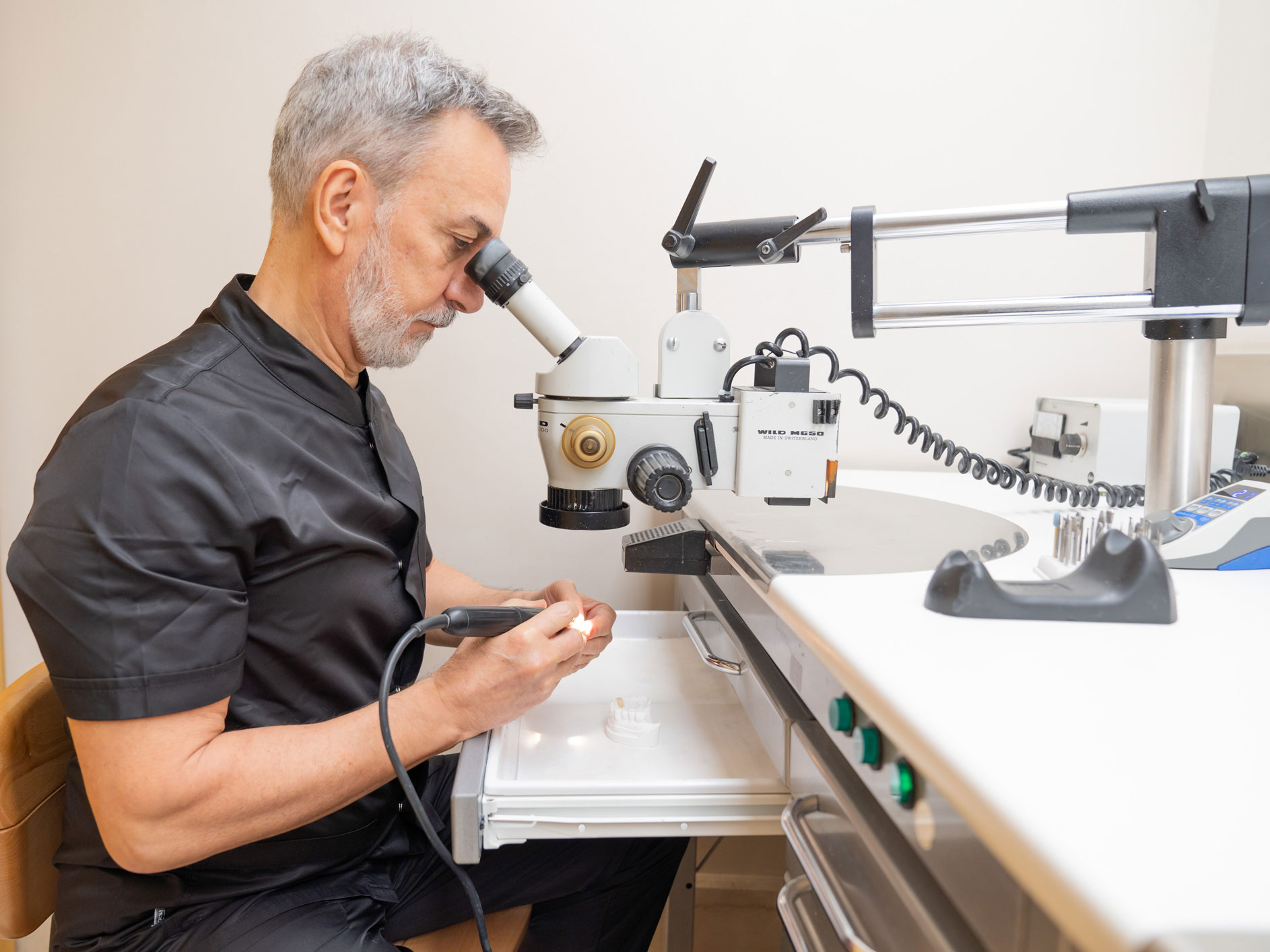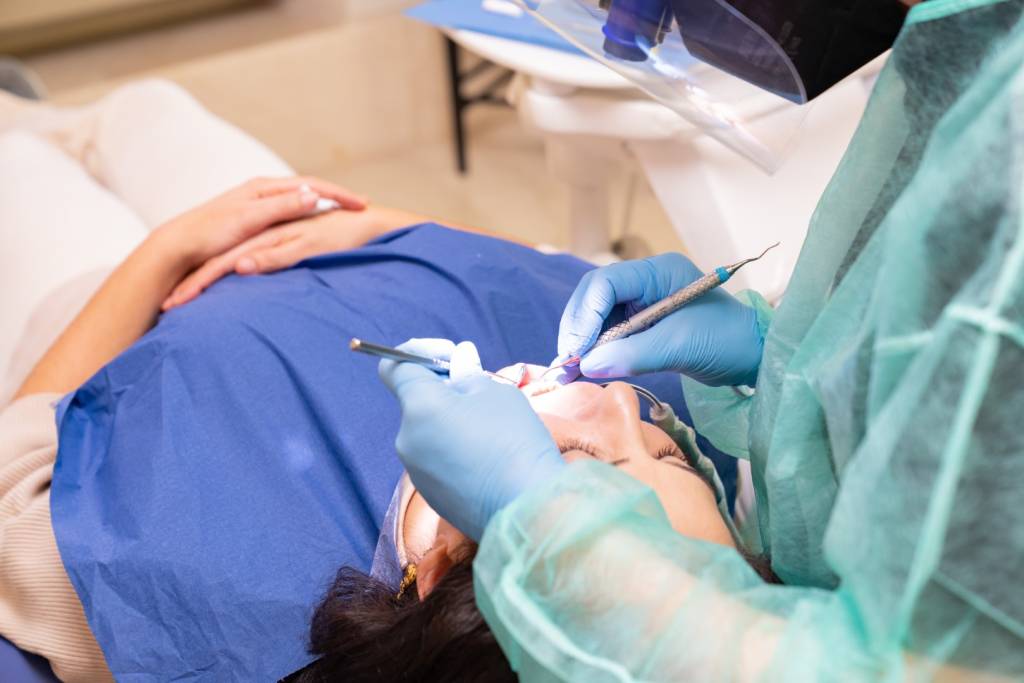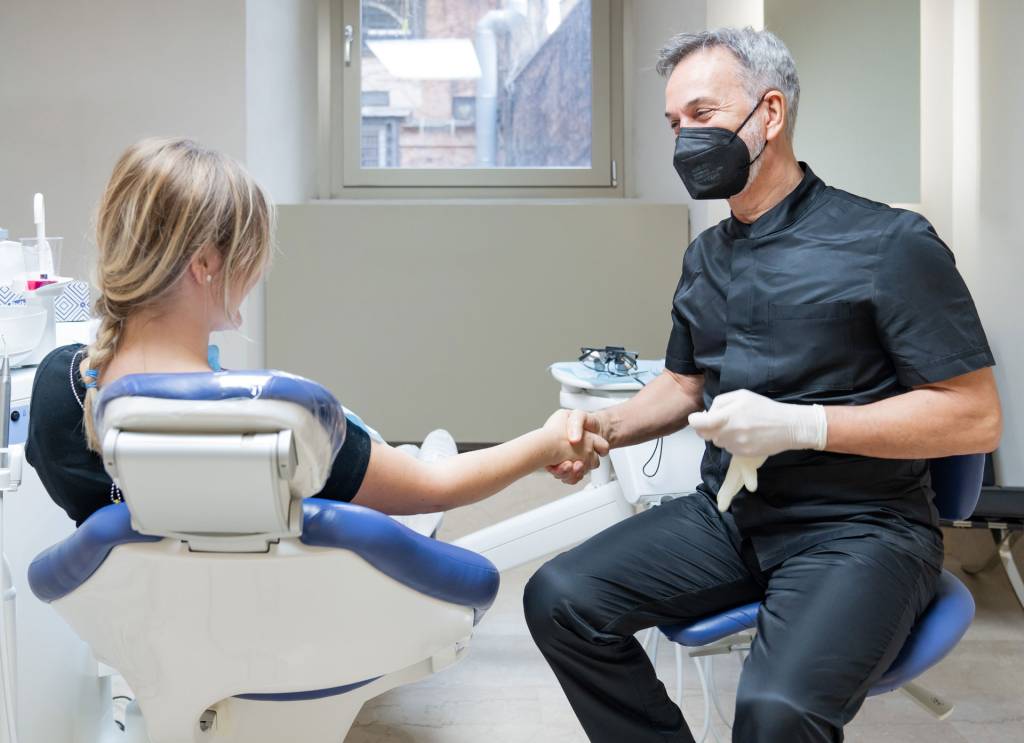Reconstruction for the treatment of a damaged tooth
In the presence of very carious teeth, extraction and replacement by implantation is often suggested. On the contrary, the scientific literature claims that a recovered tooth has a better prognosis and a lower economic and biological cost for the patient. In these modes, the aesthetic result is also better.
Purpose of reconstruction
Before making a prosthetic crown, a damaged or devitalized tooth must be reconstructed using fiberglass pins and composite materials. Pre-prosthetic reconstruction provides a solid base to cement the prosthetic crown and allow the tooth to resume normal functions.


Pre-prosthetic reconstruction with pin
This dental technique consists of restoring an endodontically treated tooth in cases where caries or fracture has severely mutilated the tooth’s crown but not the root.
The fiberglass pin will be inserted and cemented into the dental canal. The emerging part of the pin will anchor a “stump” of composite material, which, properly prepared, will provide the anchorage for the prosthetic crown.
The endocanal pin anchors the stump, anchoring the prosthetic crown.
Is the endocanal pin an implant?
Some patients confuse the “stump-pin” with the implant.
While the pin is cemented inside the natural dental root (which is, therefore, present), the endosseous implant is inserted into the bone instead of the missing tooth.
Pins can be classified according to several characteristics:
Material
Form
Features (active and passive)
"Devitalized" teeth
After endodontic treatment (root canal treatment), the tooth:
Change the structure that becomes more rigid.
It no longer has nerve endings inside it.
It weakens.
The amount of carious dental tissue removed during endodontic therapy determines the weakening of the treated tooth.
The posterior teeth (premolars and molars) devitalized will, therefore, need a prosthetic cover to protect them from fractures.
We must remember that, as with all clinical procedures, the placement of an endocanal pin involves a thorough risk assessment before formulating a treatment plan or proceeding with any intervention.

Does pivot reconstruction hurt?
No, a periprosthetic reconstruction with an endocanal pin does not hurt. It is a procedure carried out with anesthesia to avoid any problems.
What are the times for the recovery of a tooth through a pre-prosthetic reconstruction with a pin and a prosthetic crown?
When we talk about the timing of a therapy, it is necessary to include:
The first specialist diagnostic visit allows the dentist to correctly evaluate the initial clinical situation.
The necessary follow-up visits following the intervention.

Four operating sessions are necessary to recover a severely damaged tooth, with times between 1 and 2 hours.
The following steps are generally required:
Diagnostic specialist visit
Root canal treatment and RPC
Prosthetic preparation
Mounting and control radiography
Each patient is unique and presents a different clinical situation that must be evaluated in all its aspects; therefore, the intervention’s duration is relative to each case’s complexity.